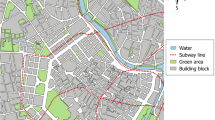Summary
1. The terms “rat-free” and “preservation of freedom from rats” are introduced in Germany as a result of the good end of the rat control campaign in Cuxhaven (1956).
2. A description of the immigration of rats in rat free areas is given: at first, the rats occupy burrows outside the buildings and the sewerages, the buildings are infested generally not before 1 to 3 years.
3. The inspection of a rat control campaign shall include at least: 10 per cent of the mansholes of the sewerage, the half of the main attraction-points (for example refuse tips, industrial etablishments) and watercourses, ditches and so on.
4. Notifications of the inhabitants give neither representative or comparable values of the numbers of rats in the town or district, but if a control of rats is guaranteed free of cost.
5. The term “rat-free” can be used no more if the rats have occupied 2–5 per cent of the buildings.
6. For the definition of the term “rat-free” is very important that — in contrast to Cuxhaven — all bait boxes stand inside of the town or district where the rats are controlled. Therefore, a part of the town or district has been made to a kind of “rarification zone”. For this reason, the term “rat-free” can be used only as terminus technicus in consideration of the local conditions. We have no objection to use this term just as other scientific branches use similar terms (for example germ-free, void of air).
Similar content being viewed by others
Literaturverzeichnis
Becker, K., 1963: Gesichtspunkte und Empfehlungen zur Organisation von Rattentilgungsaktionen mit Gewährleistungszeit; Bundesgesundheitsbl. Nr. 24, pp. 381–385.
Buchmann, W., 1958: Rattentilgung im Stadt- und Industriegebiet von Leverkusen; Städtehygiene 8.
Drummond, D. C., 1967: Can we achieve rat-free towns? Internat. Pest Control9, pp. 22–27.
Ehrentraut, P., 1953: Bekämpfungsergebnisse mit einem neuen Cumarin-Mittel; Nachrichtenbl. f. d. dt. Pflanzenschutzdst. N. F. 7 (Berlin), pp. 124–129.
Henschel, S., 1965: Rattenbefall im Hamburger Staatsgebiet südlich der Norderelbe vor und nach der Rattenbekämpfung 1963; Pflanzenschutz-Nachrichten Bayer18, pp. 157–164.
Kirchberg, E., 1963: Bericht über die Rattenbekämpfung in der Stadt Oberhausen (Rhld.) im Jahre 1962; Pflanzenschutz-Nachrichten Bayer16, pp. 37–48.
Simon, H., 1965: Großräumige Rattenbekämpfung mit Gewährleistungszeit aus der Sicht des Anftraggebers; Pflanzenschutz-Nachr. Bayer18, pp. 165–173.
Schulze, G., 1965: Rattentilgung und Gewährleistung des rattenfreien Zustandes aus der Sicht des Praktikers; Pflanzenschutz-Nachrichten Bayer18, pp. 174–183.
Steiniger, F., 1955/56: Die vollständige Beseitigung der Ratten im Hafen- und Fischindustriegebiet von Cuxhaven; Neues Archiv für Niedersachsen8 (13), pp. 395–397.
Ders., 1958: 2 Jahre rattenfreies Fischereihafen- und Fischindustriegebiet in Cuxhaven; Desinfektion und Gesundheitswesen50, 6.
Ders., 1960: Über das Beibehalten eines rattenfreien Zustandes im Fischindustrie- und Hafengebiet von Cuxhaven unter Einfluß einer Abwanderung von Ratten aus Schiffen; Desinfektion und Gesundheitswesen52, 5.
Ders., 1966: Die Stellung der modernen Rattenbekämpfung in der Kommunalwirtschaft; Kommunalwirtschaft, Heft 4, pp. 155–160.
Telle, H.-J., 1962: Delmenhorst als dritte Stadt des Bundesgebietes rattenfrei; Städtehygiene 13, pp. 21–23.
Ders., 1962: Rattenfreie Städte und Kreise in Niedersachsen; Der prakt. Schädlingsbek.14, pp. 158–159.
Ders., 1966: Rat free towns; Seminar on rodents and rodent ectoparasites, Geneva 24–28 October 1966; WHO/Vector Control/66. 217, pp. 101–106.
Ders., 1966: Beitrag zur Kenntnis der Verhaltensweise von Ratten, vergleichend dargestellt beiRattus norvegicus undRattus rattus; Z. f. Angew. Zoologie,53, pp. 129–196.
Ders., 1966: Die Problematik der Beibehaltung eines rattenfreien Zustandes; Der prakt. Schädlingsbek.,18, pp. 72–73.
Ders., 1967: Die Auswahl von Rodentiziden für die Rattenvertilgung und die Beibehaltung eines rattenfreien Zustandes; Anz. fur Schädlingskde.XL, pp. 161–166.
Ders., 1967: Ergebnisse der im Jahre 1966 in Niedersachsen durchgeführten Rattentilgungsaktionen; Der prakt. Schädlingsbek.19, pp. 3–4 und 19–20.
Telle, H.-J., und Vauk, 1963: Über das Vorkommen, das Verhalten und die Vernichtung der Wanderratte (Rattus norvegicus Berkenhout) im Jahre 1962 auf Helgoland; Anz. f. Schädlingskde.,XXXVI, pp. 70–73.
Wichmand, H., 1967: Comments on Rat-free Towns; Report of the International Conference on Rodents and Rodenticides (European and Mediterranean Plant Protection Organisation); pp. 89–91.
Rights and permissions
About this article
Cite this article
Telle, H.J. Zur Problematik des Begriffes „rattenfrei“. Anzeiger für Schädlingskunde 41, 119–125 (1968). https://doi.org/10.1007/BF02330011
Issue Date:
DOI: https://doi.org/10.1007/BF02330011




